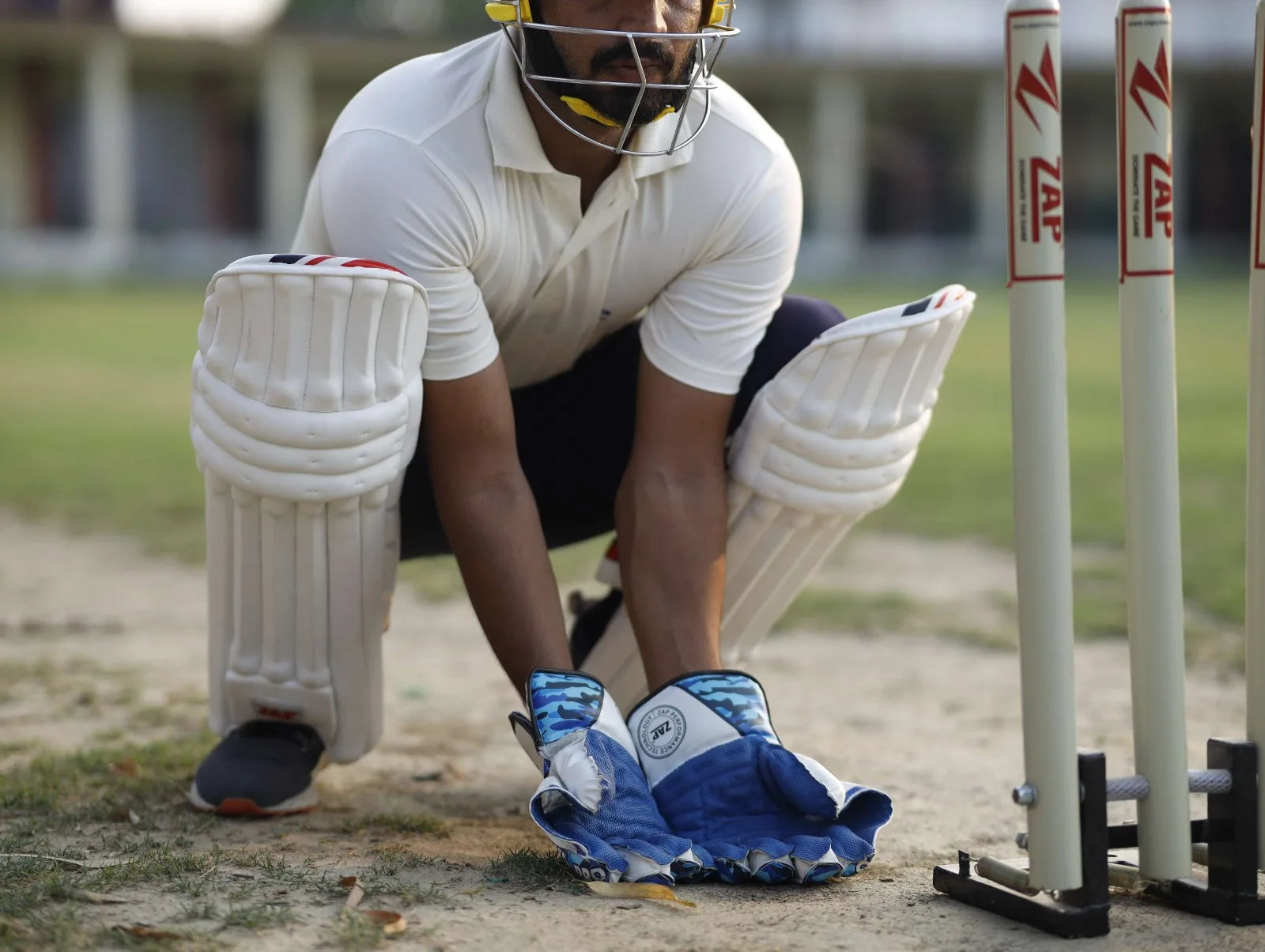That dialogue from the movie M.S. Dhoni, The Untold Story "Ek bowler wicket lega, ek achha batsman aapke liye kisi match me run banayega, kisi match me nahi banayega, lekin ek achha fielder har match me run bachayega" is enough to tell you how important a part fielding plates in winning a match.
We may all love batting and bowling while playing cricket. Batting and bowling are two important aspects of the game that decide the result of a match. Every run you score and every wicket you take has the ability to change the direction of the match. But fielding is the most underrated part which not many people talk about but is essential, and we see it every day how pro players put all their efforts to save every run, to take every catch and impact the game. Fielding positions are also a part of strategy, remember that IPL match in 2010, when Dhoni put Matthew Hayden at mid-off but straight in line with the pitch vs Pollard and he ended up hitting the ball straight to him which ultimately won CSK the match. That was just a masterclass from Dhoni.

In a cricket match, the fielding team has 11 players on the field, one being a bowler, one a wicket keeper, the rest 9 are fielders. Fielding positions in professional matches depend upon a lot of factors, like powerplay, spin bowling or pace bowling, new ball leather or old leather, the kind of the ball (whether tennis or leather) the kind of the pitch, the bowling end, the length of the boundaries, the batsman batting and some other factors too. The words, like midwicket, deep third man all might feel like jargon for most of you. But, worry not, ZAP’s got your back. In today's chapter of ZAP Explains, here is your comprehensive guide of cricket fielding positions that will help make you a master tactician.
The cricket ground has two parts, one is the 30 yard circle (highlighted as light green in the pictures) from the pitch and the other is beyond that circle till the end, to the boundary. Every position inside the circle has a deep version, which is just the extension of the position but outside the circle and near the boundaries. ‘Deep’ is added to the name of every fielding position as a prefix when a player is fielding at boundaries.
SO, let's start learning about these fielding positions along with strategies that can win you games.
Wicket Keeping:

Wicket keeping and the wicket keeper is the most important fielding position on the cricket field. Standing just behind the batsman and the stumps, a wicket keeper has unreal reflexes that help him take extremely quick catches. The wicket keeper also helps the captain make important decisions like DRS, and sledge the batsman to mentally irritate him. With ZAP’s top of the line wicket keeping kit, you are going to feel the best wicket keeper in the world and DOMINATE EVERY GAME from behind the stumps.
Slips:

This fielding position is generally reserved for the best fielders on the field. Fielders in these positions stand along the wicket keeper on both sides of the pitch, leg and off. Only fielders with great reflexes can stand on the slips and take brilliant catches. Waiting for those edges by the batsman and grabbing them with all that you can, slip catches have given us some moments that make us question ourselves, HOW DID HE DO THAT!? Along with this, we have seen some hilarious drops in this position too. Just think about James Anderson bowling, with Steve Smith and Virat Kohli at the slips. It is a batsman’s nightmare.
So, if you don't want to edge a single ball to the slips, read and learn about the Cricket Batting Tips and Techniques by ZAP and become a batting legend.

Credit: NDTV Sports
Gulley:

Credit: Times of India
Gulley is the position between point and slip. Here, the fielder is neither at the slips nor at point, but is placed in such a way that the fielder is extra protection between slips and point.
Mid on and Mid off:

Mid on and Mid off are the two fielding positions located on either side of the pitch within the 30 yard circle. They are responsible to stop every shot hit straight down the ground by the batsmen. Stopping those straight drives in the powerplay with a dive, you’d be the hero on the pitch. Such fielders require great agility, a good throw and need to communicate ideas with the bowlers. We generally see the captains in these positions if they’re not already fielding in any other position.
Learn to play the Straight Drive Cricket Shot with ZAP and weave any through defence that the fielding side has set!

Credit: India Today
Long on and Long off:

These two are the deep versions of mid on and mid off and these fielders stand on the boundary ropes. You need to be quick and your catching should be excellent to field at these positions. We’ve seen some brilliant catches on these fielding positions, like those diving catches from Virat Kohli, Kieron Pollard and more. Pollard’s catch in 2014 vs Rajasthan in the IPL will still give every fan goosebumps.

Credit: NDTV Sport
But worry not, after reading this Power Hitting in Cricket chapter by ZAP, you'll be able to clear any boundary with ease, no matter even if Jadeja or Pollard are standing there.
Third Man and Fine Leg positions:

Third man and fine leg positions are behind the batsman and near the boundaries, but if there’s a fielding restriction like in the powerplay, they can be inside the 30 yard circle too. Third man is on the off side of the batsman while fine leg is on the leg side.
Point:

Any ball hit toward the square of the ground on the offside are supposed to be fielded by the player at the point position. The cut shot, square cuts that the batsman plays runs quickly towards the boundaries, so the fielder at point has to be quick and cover a lot of distance in a short amount quickly.
The deep point stands at the boundaries.

Credit: Navbharat Times
The position where the point or deep point fielder is shifted a bit towards the third man is the backward point position.
Cover Position:

- The cover position is at the offside and usually in the powerplay protects shots like the cover drive from going towards the boundary. The deep cover at the boundaries covers a lot of distance and is placed for shots like lofted cover drives, inside outs and all shots in the offside.
- Extra Cover position is between the point and covers, and is an extra fielding position between them. This fielder at this position is placed in the powerplay to defend against the backfoot drives and the square drives that the batsman plays. The deep fielding position is known as deep extra cover.
Square Leg:

- The square leg position is on the leg side on the square of the wickets. Pull shots, sweeps and hooks, this fielder has to stop all these played by the batsman. The deep square leg is an even more difficult position to field than square leg.
- The backward square leg is similar to the backward point but on the leg side, where it is shifted towards the fine leg as per fielding strategies.
Mid Wicket:

The fielder at midwicket on the leg side is considered one of the team’s best fielders. This is the position where the ball gets hit the most often. Deep mid wicket is where you see Jadeja fielding most often.

Credit: The Indian Express
Remember that blinder Ben Stokes held on to in the 2019 ICC ODI World Cup against South Africa, deep mid wicket is where he was posted. The fielder at this position is usually the safest on the field, someone who’s never going to drop a catch or misfield.
Close Fielding Positions:

These fielding positions are extremely close to the batsman and majorly used in test cricket to put extra pressure on the batsman. These fielders capitalize upon every mistake that a batsman makes and grab onto those catches off the mistimes defences. It is a very unsafe and dangerous fielding position and a lot of players get badly injured at these positions, but as cricket is supposed to be played with grit and determination, these fielders give their all for the team.
Wear the right pair of cricket protection at such fielding positions and protect yourself from all kinds of injuries. These positions include silly point, silly mid on/mid off, and short leg.

Credit: Sportskeeda
So, now that you have understood everything about fielding positions in Cricket, let's get into the intricacies and learn about the Cricket Rules, and become a pro at the sport.
FAQ:
Q: Are fielding positions the same in all formats of cricket?
While the basic fielding positions remain the same, teams may adapt their fielding strategies based on the format of the game, pitch conditions, and opposition batsman’s batting style.
Q: How many fielders can be placed outside the inner circle in limited-overs cricket?
In limited-overs cricket, a maximum of five fielders can be placed outside the inner circle during non-powerplay overs.
Q: Can fielding positions change during a cricket match?
Yes, fielding positions can be adjusted based on the game situation, batsman's style, and bowler's tactics. Captains often make strategic changes to optimize their fielding setup.
Q: What is the purpose of having multiple slip fielders?
Multiple slip fielders increase the chances of catching edges and providing early breakthroughs by covering a wider range of angles behind the batsman.
Q: Can a fielder change their position during an over?
Yes, fielders can change their positions between deliveries to adapt to the batsman's stroke play and the bowler's line and length.
Conclusion:
These were all the important cricket fielding positions on the ground. But a captain can change the place of a fielder according to his strategy to get a batsman’s wicket. In today’s era of T20s and ODIs, cricket field position and bowling according to that field position to stop runs and get all the important wickets is a major skill that a captain must have. All great captains had this quality of reading the game and changing the field position of the players. Also, it is not only the fielding skills that a player must have, his fitness also plays an important role in helping the player give that extra push to save every single valuable run for the team.



Share:
Why you should join a Cricket Academy?
English Willow vs Kashmir Willow - Which bat should you choose?
2 comments
good posions